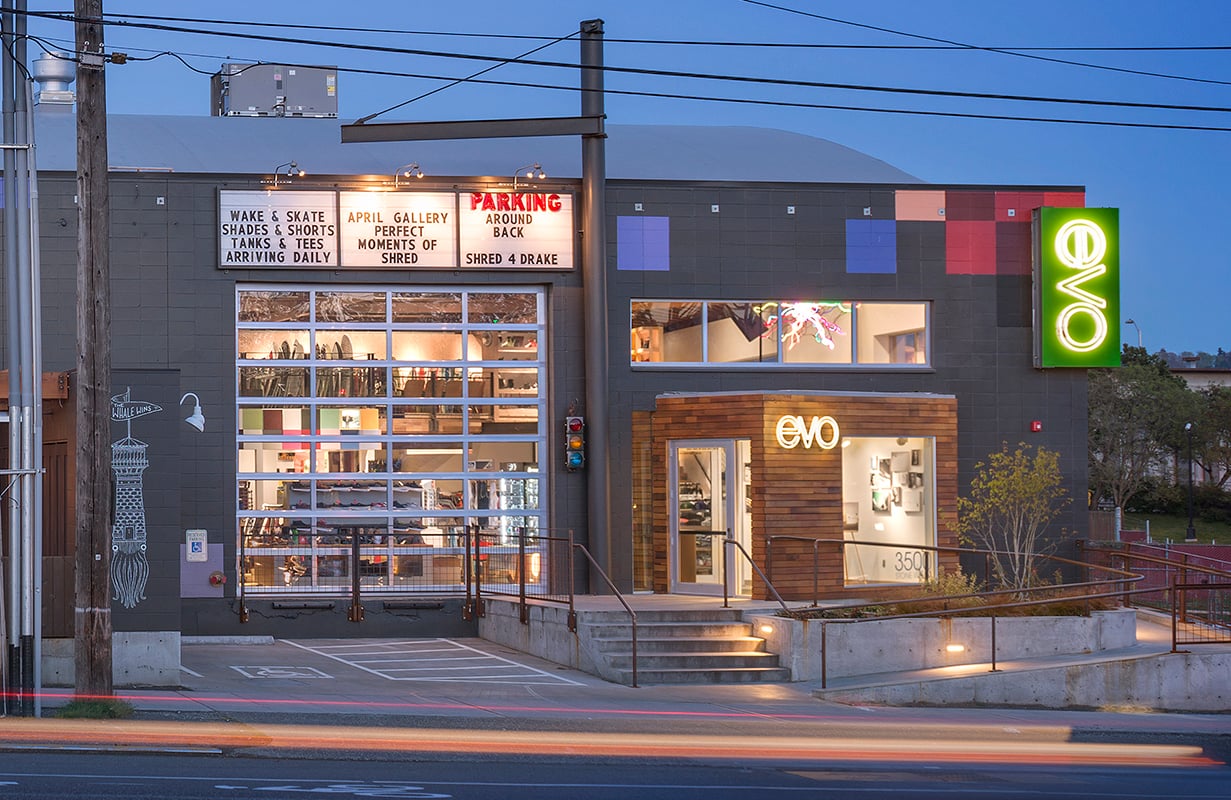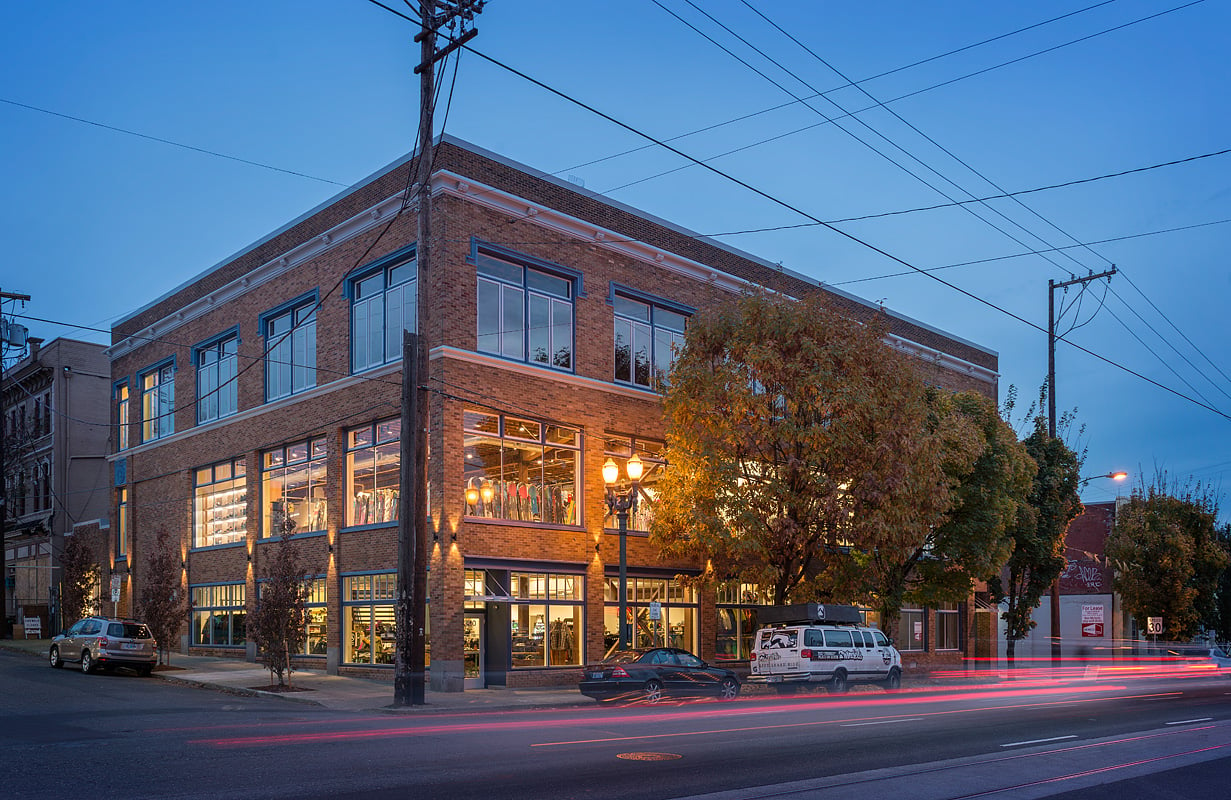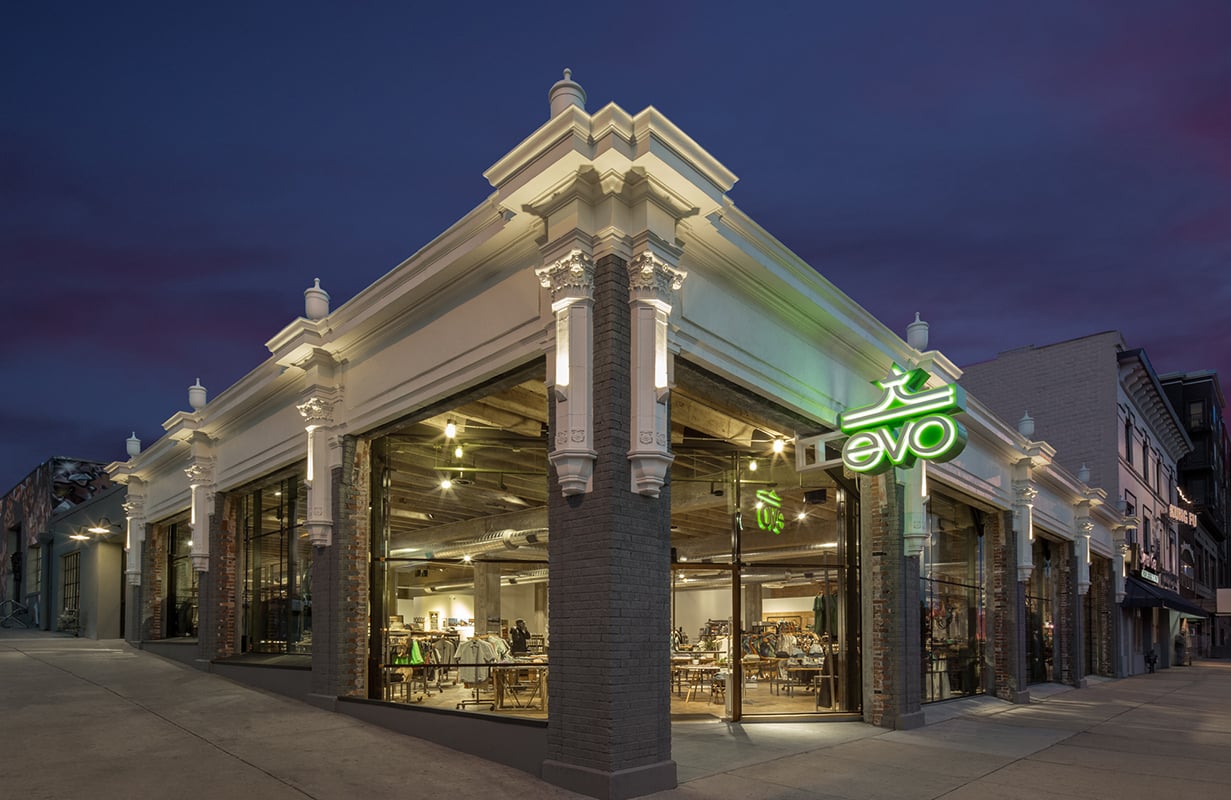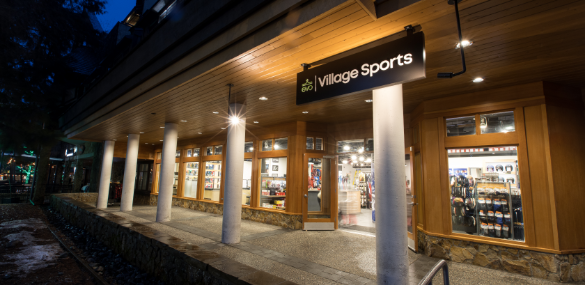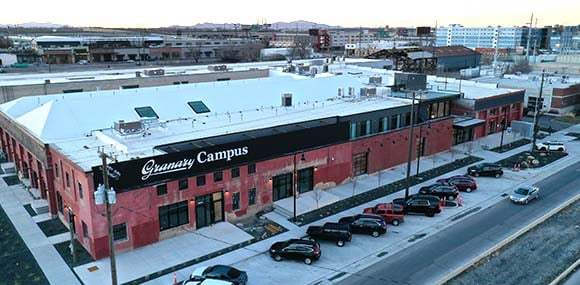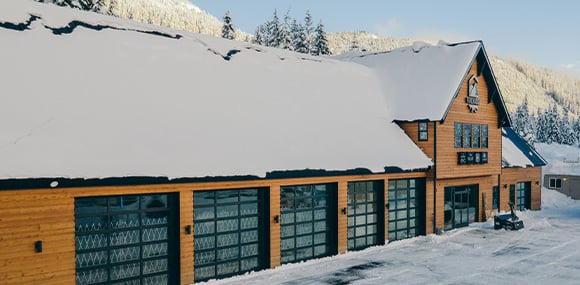Mountain Bike Size Chart, Fit & Frame Geometry
So if you're wondering how to pick the right size mountain bike, read along and we’ll walk you through the process. For riders coming from another cycling background, it’s important to note that mountain bike sizing is different than other kinds of bikes.
If you are interested in learning more about today's spectrum of mountain bikes, and what to consider when making a purchase, check out our Mountain Bike Buyer's Guide!
Contents
Mountain Bike Size Chart
Click your frame size to shop
| Rider Height (in) | Rider Height (cm) | Frame Size | Frame Size (in) | Frame Size (cm) |
| 4' 10" - 5' 2" | 148cm - 158cm | XS | 13" - 14" | 33cm - 37cm |
| 5' 3" - 5' 6" | 159cm - 168cm | S | 15" - 16" | 38cm - 42cm |
| 5' 7" - 5' 10" | 169cm - 178cm | M | 17" - 18" | 43cm - 47cm |
| 5' 11" - 6' 1" | 179cm - 185cm | L | 19" - 20" | 48cm - 52cm |
| 6' 2" - 6' 4" | 186cm - 193cm | XL | 21" - 22" | 53cm - 57cm |
| 6' 4" + | 194cm + | XXL | 23" + | 58cm + |
We also recommend looking at the size chart that is specific to the brand you are looking at due to differences in design philosophy and geometry. On each of our mountain bike product pages, we have the size chart for that brand. While the size of the bike frame is a good starting point, there are other factors, like geometry, intended use, and skill level that factor in to choose the right size bike - we'll cover these below.
How Are Mountain Bikes Sized?
Most mountain bike manufacturers use classic Small, Medium, Large sizing. For the most part, bike frame size is the only thing that changes when you go between sizes - things like wheel size, suspension, and relative geometry number often remain the same. However, some manufacturers will change things like wheel size and suspension travel across the size run of the same model.Seat tube length is the traditional method for bike sizing, but with all the interesting shapes that mountain bikes come in these days, it has become less relevant to finding what size mountain bike you should get. Most mountain bikes focus on an extremely low standover height, so the traditional method of standing over the bike flat-footed doesn’t really work either. This is why mountain bike sizes are categorized as Small, Medium, Large, and manufacturers give their own size recommendations based roughly on your height.
Sizing Up Or Sizing Down Your Mountain Bike
So you’ve matched your height to a manufacturers mountain bike size chart, and you’re right on the edge - what do you do now? Sometimes you’re in between mountain bike sizes. Beyond adjustments to your mountain bike cockpit and seat height, here’s a few tips on when to size up or size down your mountain bike when you don't quite fit on the mountain bike frame size chart.
What You Get for Sizing Up
When it comes to mountain bike sizing, Reach tends to be what changes more from Small to Large than Stack. Almost all mountain bikes are trying to get as low as possible to buy the rider range of motion in the cockpit of the bike so you’ll see a lot of bikes with an increase in Reach.There’s also a minor corresponding increase in Wheelbase as the whole bike itself gets a little bit longer, so you get the benefits (and pitfalls) of a longer mountain bike.
Also, if you happen to have a proportionally longer torso, you’ll want to size up in order to get a neutral fit, since Reach is primarily what’s affected by the size.
Flexibility and range of motion in your hips is also something to consider. If bending over and touching your toes sounds like a tall order, a longer bike is going to be a bit more taxing to maintain a low and aggressive riding position. On the other hand, if you know the difference between your Tadasana Pose and your Lotus Pose (AKA: you’re a supple yoga leopard), a larger size will reward you with a more aggressive riding position.
To sum up: If you’re flexible, longer in the torso and like to monster-truck over your terrain rather than whip or flick your way around it, size up your mountain bike.
What You Get for Sizing Down
Conversely, a smaller sized mountain bike will have a shorter Reach and a slightly shorter Wheelbase. Stand-over height will be a tad lower and you might have to extend your seat-post a bit in order to get to your pedaling position, but it’s a pretty minor consideration when it comes to being between sizes.
If you’ve got proportionally longer legs than average, lack a bit of flexibility or generally like to be more upright , you may be a bit more comfortable on a shorter size.
Additionally, a shorter Wheelbase will ride more nimbly and while the longer cockpit provides a really aggressive riding position, low and aggressive riding positions are tiring to be in, so consider your fitness, endurance and ride length. Shorter bikes are easier to be on for long periods of time.
To sum up: If you like a more nimble and whippy ride, are a bit less flexible, are shorter in the torso or are looking for a more casual riding position, size down your mountain bike.
Demoing Mountain Bikes
Now that you know what happens when you size up and down, go test ride some bikes! Just like 2 medium shirts from different brands don't fit the same, similar bikes from different brands will also fit and feel differently. You may size up with one brand and size down for another so go out there with an open mind, a good idea of your riding style and how you’ll use the bike, and find the best fitting bike for you!
Rental and demo bikes are available at evo Seattle, evo Portland, evo Denver, evo Whistler, evo Salt Lake, and evo Snoqualmie Pass. (Note: The cost of up to three bike demos can be applied toward the final cost of purchasing a new or used bike from us.)
Mountain Bike Geometry Measurements
How to Measure Mountain Bike Frame Size
Mountain bike geometry is literally the shape of the bike, and understanding it is crucial for proper fit and performance. The overall shape of your mountain bike is defined by several key measurements, which influence the bike's feel, handling, and suitability for different terrains. When determining how to measure bike size, particularly how to measure bike frame size, understanding these geometric measurements is essential.
While there isn't one single "bike size" measurement in the traditional sense like clothing sizes, these geometric measurements provide a detailed picture of how a bike will fit and ride. When discussing how to measure a bike frame, we're really looking at a collection of measurements that define its dimensions.
Two of the most important measurements that impact bike fit are Reach and Stack. These terms originated in the road, triathlon, and time trial cycling world, but their values are unique to mountain bikes and shouldn't be compared directly to those of other bike types. These measurements are key when determining how to measure mountain bike frame size.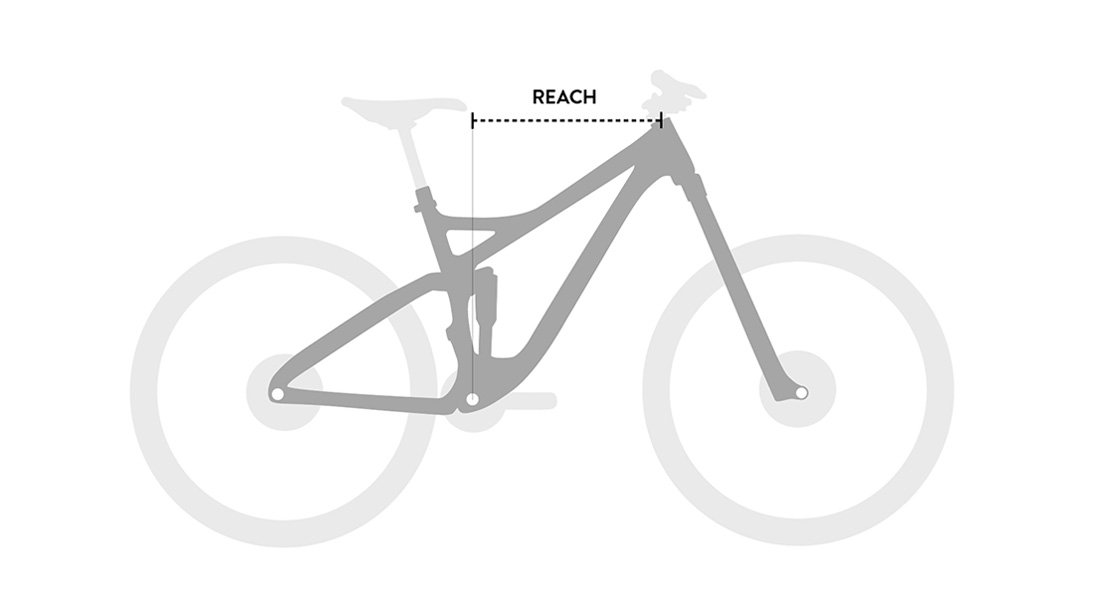
Mountain Bike Reach
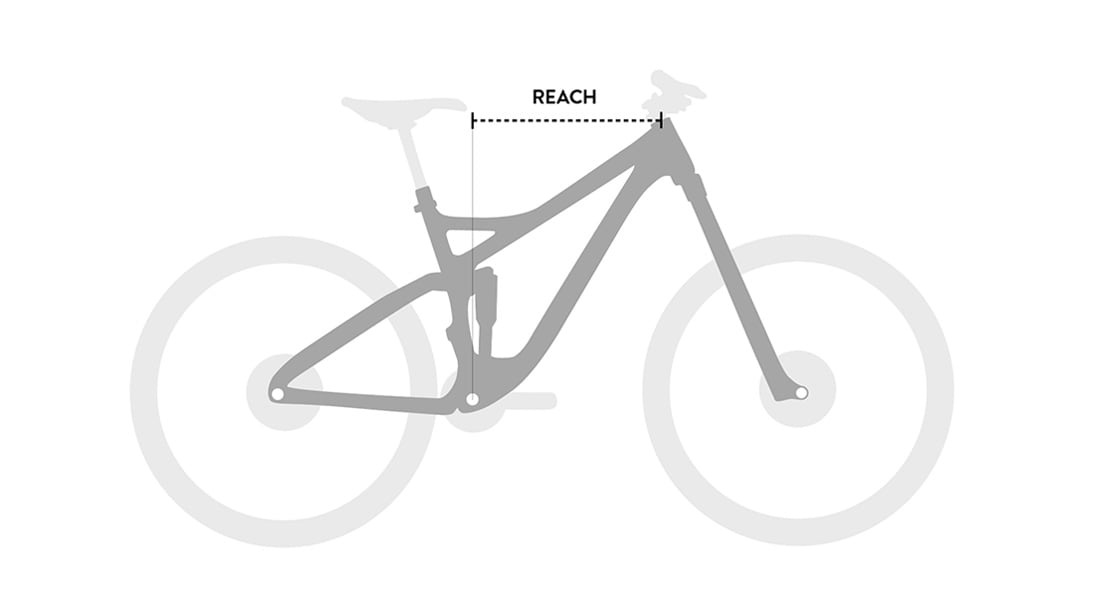
The reach measurement on a mountain bike is the horizontal distance between the bottom bracket and the center of the head tube. This is arguably the most important figure for mountain bike fit because it affects the length of your bike’s cockpit when you’re standing on the pedals and how much range of motion in your hips you’ll use up in order to achieve a good, strong riding position. Too long of a reach and you’ll be stuck leaned over and stretched out, too short of a cockpit and your weight bias will shift too quickly and leave you in a position that’s overly upright.
Mountain Bike Stack
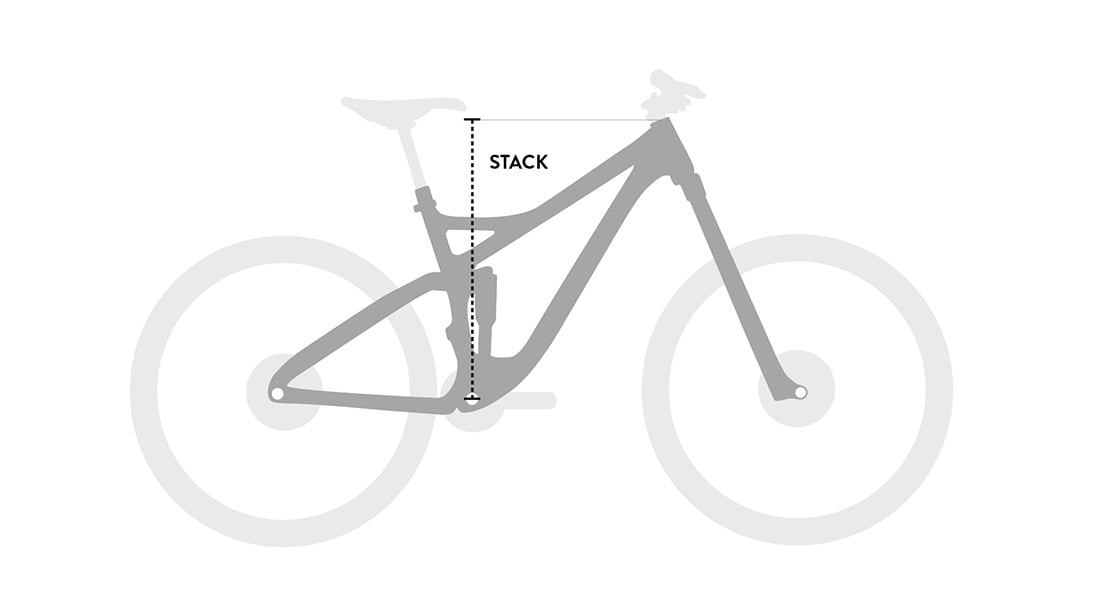
The next important mountain bike geometry measurement is stack, the vertical distance between the bottom bracket and the center of the head tube. This is primarily a gauge of seated pedaling position and relative handlebar height. This can be adjusted to a degree, with headset spacers & handlebar rise for increased stack height. For mountain bikes, where geometry is based on the aggressive riding (standing) position with the seat down, Reach trumps Stack as the primary mountain bike fit dimension.
Mountain Bike Head Tube Angle
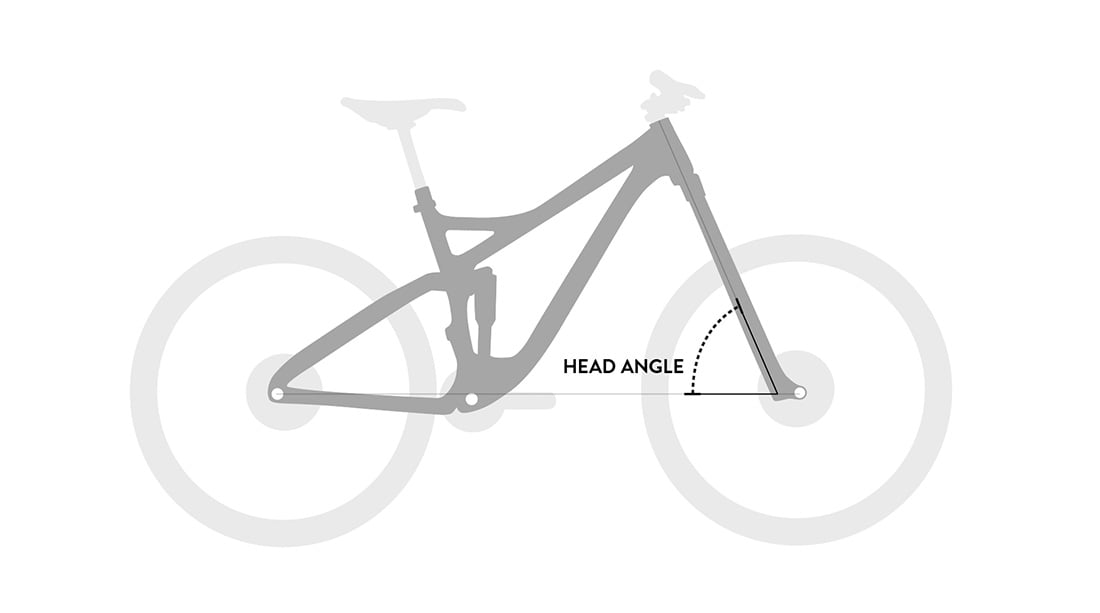
Head angle, or head tube angle, is the angle between the front fork of your mountain bike and the ground. Although there are other parameters that go into what makes the front wheel behave, (fork offset, trail, etc) this is the key metric that the industry uses to determine front-wheel characteristics.
A “slack” mountain bike head angle is a lower number (eg: 65°) relative to a “steep” head angle (eg. 70°). A slacker head angle will, in general, be more stable at high speeds as well as feel more comfortable on steeper (downhill) terrain. Conversely, your bike will steer lazily and flop from side to side on uphill terrain - you will need to make more body position changes in order to tackle steep up hills, such as keeping your weight on the front tire so you don't wheelie yourself off the trail.
Mountain bikes with steep head angles feel like the front wheel is planted and steer nimbly on uphill terrain, while feeling twitchy and unstable on fast downhill terrain. If your inclinations (no pun intended) are towards pedaling uphill, you’ll pick a bike with a steeper head angle and vice-versa if you like to head down.
Mountain Bike Chainstay Length
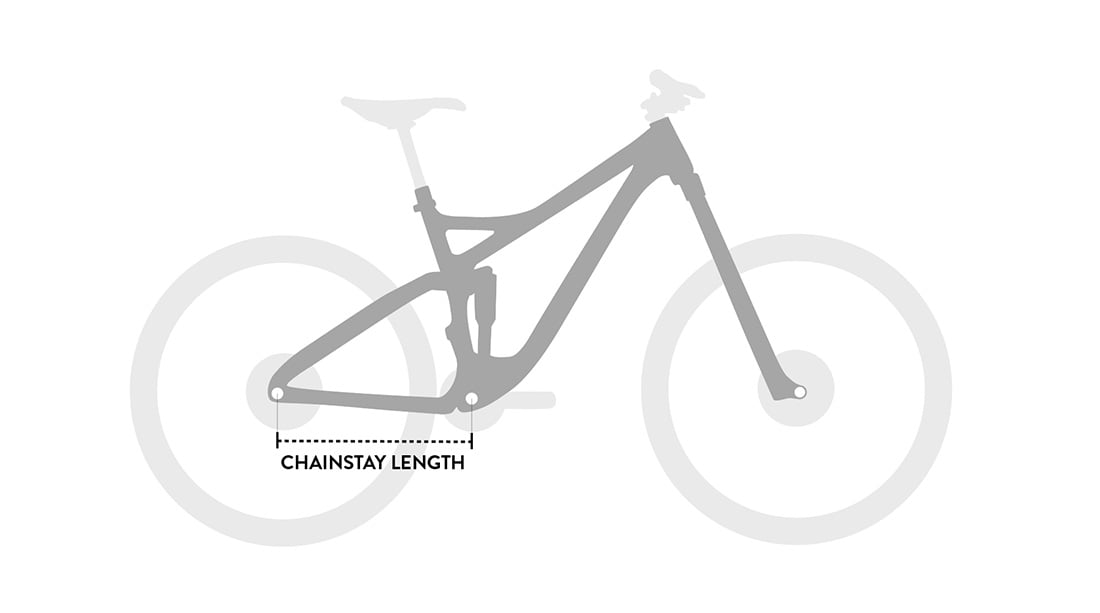
Chainstay length preference is personal to each rider. This measurement effectively determines the distance between the rider’s center of mass and the rear axle. Bikes with short chainstays have the rear wheel closer to being “under” the rider. Short chainstays allow the rider to be more dynamic with their weight. This means easier manuals & wheelies and a general ease of getting the front wheel off the ground.
This comes at the expense of overall Wheelbase length, which contributes to stability at speed and over rough terrain. (Consider that unintentional wheelies while going uphill aren’t generally a desired trait.) If you want your bike to ride nimbly and like wheelies & manuals, short chainstays are your friend. If you prefer stability, go for a bike with longer chainstays.
Mountain Bike Bottom Bracket Height
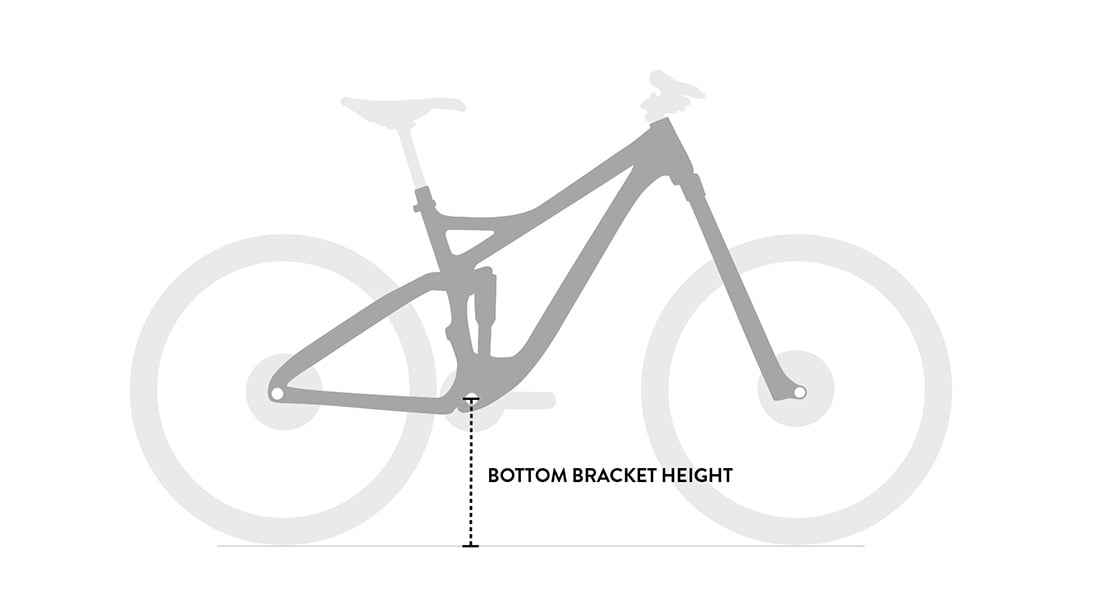
The bottom bracket height on your mountain bike is the distance between the ground and the center of your cranks. Some manufacturers refer to “Bottom Bracket Drop,” which is the vertical distance between the wheel axles and the bottom bracket. They effectively measure the same trait of the mountain bike, which is how low your center of mass is.
Just like your lowered sports car, bikes with low bottom brackets corner like they’re on rails and transition from turn to turn effortlessly. The tradeoff here is that the earth isn’t flat and trails aren’t typically paved smooth; the lower your bottom bracket, the more likely you’ll clip rocks, roots or logs you’re trying to hop over.
If you’re a skilled and savvy rider, you can make sure your pedals aren’t down when passing over obstacles, but that means not pedaling over rough terrain and can be difficult to do when you’re brain’s starved for oxygen on a climb or you’re traveling at blinding speeds.
Mountain Bike Wheelbase
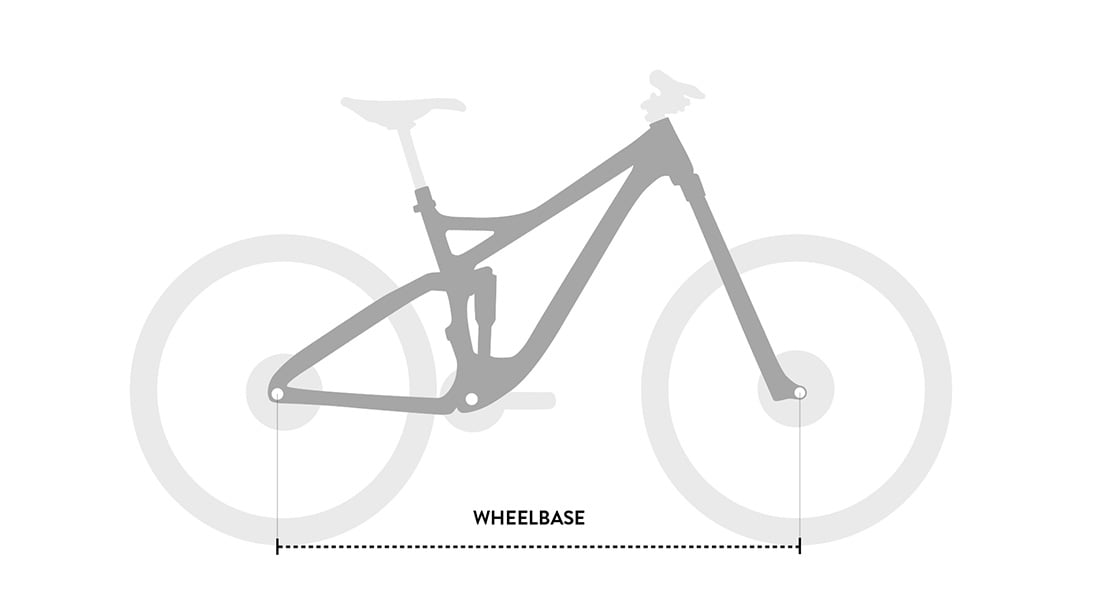
There are a lot of factors that contribute to the wheelbase length on a mountain bike including Head Tube Angle, Reach, and Chainstay Length, which we’ve discussed previously. Total wheelbase is something of a culmination of all of these factors.
The gist of wheelbase is that increasing the distance between your front and rear axles will increase stability, whereas shortening wheelbase will make a bike more maneuverable. Take note of where that increased wheelbase is coming from (Head tube angle? Chainstays?) and reference the above measurements to see how that’ll additionally affect the overall ride of your bike.
Conclusion
That’s a lot of information and though we've only covered the basics, this should give you enough background to pick the right size mountain bike and figure out how a mountain bike should fit.
That said, there is still no substitute for getting out there and test riding some bikes. When it comes to choosing a mountain bike, there’s always a little bit of an unexplainable, intangible connection to a particular ride. It just fits and feels right. So take this info with a grain of salt, throw your leg over a couple of bikes, and go ride! If you’re in the area of one of our locations, check us out and come in for a test ride!
Need a tune up? Bring your bike in for maintenance at any of our flagship locations for assistance:
Learn More With Our Other Bike Guides:
How to Choose a Mountain Bike
Mountain Bike Sizing and Fit Guide
How to Get Started Mountain Biking
How to Choose a Mountain Bike Wheel Size
Mountain Bike Suspension Basics
Women's Mountain Bike Buyer's Guide
How To Get Started Gravel Biking
Electric Mountain Bike Buyer's Guide
Classes of eBikes
Travel Guides - Where to Mountain Bike
Travel Guides - Where to Ride eBikes
Mountain Bike Cockpit Setup & Seat Height
How to Choose a Mountain Bike Dropper Post
How to Choose Mountain Bike Tires
How to Choose Mountain Bike Handlebars
How to Choose Mountain Bike Pedals
How to Choose Clipless Pedals, Shoes & Cleats
How to Choose a Bike Seat / Saddle
Women's Mountain Bike Gear & Clothing Guide
How to Choose MTB Knee Pads
Bike Helmet Size & Fit Guide
How to Choose Bike Shoes
Shimano Groupset Hierarchy Explained
SRAM Groupset Hierarchy Explained
SRAM vs Shimano Groupsets Compared
What to Bring Mountain Biking
What to Wear Mountain Biking
Mountain Bike Tire Pressure Guide
Mountain Bike Maintenance Schedule
How to Clean a Mountain Bike
How to Change Bike Pedals
How to Bleed SRAM Brakes
How to Bleed Shimano Brakes
How to Convert to Tubeless Tires
How to Replace Internal Cable Housing
How to Adjust Your Rear Derailleur
How to Replace a Bike Chain
How to Fix Bike Creaks & Noises
This is evo. We are a ski, snowboard, wake, skate, bike, surf, camp, and clothing online retailer with physical stores in Seattle, Portland, Denver, Salt Lake City, Whistler, and Snoqualmie Pass. Our goal is to provide you with great information to make both your purchase and upkeep easy.
evo also likes to travel to remote places across the globe in search of world-class powder turns, epic waves, or legendary mountain biking locations through evoTrip Adventure Travel Trips. Or, if you prefer to travel on your own, check out our ski & snowboard resort travel guides and mountain bike trail guides.
Still have questions? Please call our customer care team at 1.866.386.1590 during Customer Care Hours. They can help you find the right setup to fit your needs.
